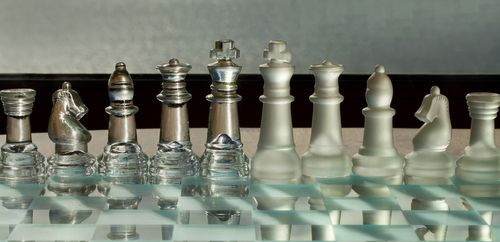Liberals And Conservatives: Could the Similarities Outweigh the Differences

How do you write about the intersection of political beliefs and science without tripping over the usual biases and stereotypic characterizations? Everyone’s got a point of view and no one, not even the most rational-minded of scientists, remains completely objective at all times. While some fascinating studies demonstrate the ways in which liberals and conservatives differ, the similarities between members of opposing political parties are much more compelling.
Why not begin with the issue of science itself.
Recent research suggests that one party — go ahead, fill in the blank as you please — does not monopolize the bias against the scientific community. The study, conducted by researchers at Ohio State University, found people from both the left and right parties bristled when presented with material that covered polarizing and politicized issues.
The researchers designed their study as a basic ruse. They requested the help of 1,518 online participants from across the country in ‘evaluating a new educational website’ about science. In fact, the researchers were measuring how participants reacted to neutral science articles — geology, for example — as well as scientific papers on pulse-racing topics including climate change, fracking (hydraulic fracturing), evolution, and nuclear power. The researchers randomly assigned participants to read an article discussing one of these topics. Before this, participants had answered a variety of demographic questions in addition to questions about the science topic they had been assigned.

When reading data that challenged their political beliefs, the researchers soon discovered, both liberal and conservative participants showed motivated resistance against the facts. Worse, following this exercise in true open-mindedness, people on both sides of the political divide said they’d lost trust in the scientific community. Apparently, no one enjoys disagreement. Superiority appears to be another bipartisan failing if we are to believe a 2013 study conducted by Duke University researchers. Here, 527 adults (238 women) between the ages of 18 and 67 answered questions about various political topics. The researchers asked the participants to not only report their attitudes on nine separate topics, but also how they felt about their viewpoint for each issue: did they have any doubts about their position? Were other conclusions inferior to their own?
Bipartisan
Turns out, conservatives and liberals both felt absolutely confident in the rightness of their opinions, but they just happened to feel that way about different issues. Conservatives said their opinions concerning voter identification laws, taxes, and affirmative action could not be rivaled. Meanwhile liberals believed in the superiority of their vision when it came to government aid for the needy, torture, and keeping laws and the legal system separate from religion. Naturally, participants at the extremes of the political spectrum for each issue felt most dogmatic.
Though it would seem “They’re all so smug and self-righteous!” should be taken off the table, both parties, in all likelihood, will continue to insult one another. Is it surprising some derisive labels have been around forever? For instance, the term armchair socialist — a close cousin of ‘limousine liberal’ — was coined by 19th century German economists who disliked academics advocating social policy.
In their humorous examination of the validity of that term, a team of University of Sydney researchers analyzed responses to a survey conducted by the European Commission. More than 29,000 adults from 32 European countries had answered questions about the amount and intensity of their physical activity, while also ranking their political affiliation from 1 (far left) to 10 (far right).
Some 1,985 respondents (6.8 percent) claimed their opinions could be counted as far left, while 1,902 (6.5 percent) staked out territory on the far right. The researchers categorized anyone with a score between 3 and 8 — or 17,657 people (60.5 percent) — as a centrist. Meanwhile, 7,649 people (26.2 percent) neglected to reveal their political beliefs.
Adding up all the self-reported data, the researchers discovered the term “armchair socialist” didn’t quite fit. Though left wingers spent a similar amount of time seated as the centrists, they logged more time in vigorous activity than those in the political middle.
Every week the far left respondents clocked nearly 59 more minutes of activity than the centrists. The far right respondents ever so slightly outdid them: they logged about 62 more minutes of activity than the centrists, three minutes more than their lefty rivals. The non-political types were least active of all. Still who was least inclined to be lounging in an armchair? Right wing extremists spent about 13 fewer minutes a day sitting down than either the left or centrists.
Center
Before both extremes make it their business to turn against the middle (sigh), the center needs to be acknowledged. Various studies have claimed either the left or the right possess some measure of superior qualities; yet this Brazilian study found those in the center to score highest in terms of IQ.
Fun and games and armchairs and intelligence tests may be interesting, but neuroscience is where things get fascinating. Research exploring political bias strongly supports the psychological phenomenon known as ingroup favoritism — the tendency to value members of your own group more than members of other groups. In other words, both liberals and conservatives favor their compadres and think more highly of their ideas. (Say it isn’t so!)

In one study, when participants faced information opposing their political candidates (and attitudes), specific brain regions showed increased activity — the lateral and medial orbital prefrontal cortex, the anterior cingulate cortex, the insula, and posterior cingulate cortex. These regions are involved in the processing of pain, negative affect, error detection, and emotional appraisals. This suggests, say the researchers, the participants experienced actual distress when faced with negative information about their preferred candidates and ideas. More importantly, Medical Daily would say, this study implies the emotional responses underpinning our supposedly rational political judgments are both real and powerful, possibly inescapable. In other words, our reactions to political issues often may be simply that: neurological responses.
This argument is made most compelling by recent Virginia Tech research which is based, in part, on the hypothesis that conservatives, compared to liberals, have greater negativity bias: seeing two things of equal weight — one bad and one good — our minds react more strongly and more quickly to the bad than the good. Psychologists see this as a positive feature of our intelligence, one that probably saved our ancestors from the single aggressive animal within a peaceful landscape or helped our forebears avoid the contaminated fruit on a plate of wholesome food.
Another key study preceding the Virginia Tech research examined twins, families, and political beliefs. Here, the Bielefeld University scientists concluded that conservative and liberal inclinations are “genetically but not environmentally transmitted from parents to offspring.”
With both these radical ideas in mind, the Virginia Tech researchers enlisted the help of 83 volunteers to further examine the connection between biology and belief. The participants lay in an fMRI scanner and passively viewed disgusting, neutral, and pleasant pictures — dirty toilets, mutilated carcasses, and pretty landscapes — while the researchers watched their brain activity. After the scan session, participants rated their response to the pictures and then completed questionnaires assessing their political attitudes in addition to their disgust sensitivity and anxiety level.
Biological Bias?
With 95 percent accuracy, the brain's response to a single disgusting image was enough to predict each person’s political ideology. Even in cases when a person’s conscious rating of a picture didn’t match their neural response — in other words, they rated the picture as moderately disgusting while their brains reacted strongly — the predictions held true. So, what exactly did the researchers observe?

Conservatives had more magnified responses to disgusting images. (There is a difference between the left and the right.)
According to the researchers, this suggests a stronger negativity bias, one that may be mapped onto established neural responses. Serving to protect our ancestors against environmental threats, these disgust reactions, which clearly influence our political choices, most likely are inherited and passed down family lines.
“Accumulating evidence suggests that cognition and emotion are deeply intertwined, and a view of segregating cognition and emotion is becoming obsolete,” noted the authors of that landmark study.
Published by Medicaldaily.com



























